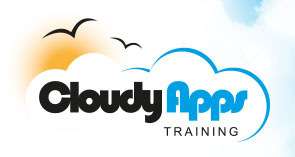


Introduction to 6lowPAN
Duration: 5 Days
Course Background
6lowPAN lies at the heart of the Internet of Things (IoT). Many of the difficulites encountered by engineers and software defelopers when working with 6lowPAN is a lack of knowledge of the IPv6 basis of 6lowPAN and how to connect 6lowPAN systems to IPv6 and IPv4 networks. This course combines practice and theory and covers- The architecture of smart objects and networking
- The hardware and software protocols underpinning smart networking
- Overviews of some practical case studies and lab implementation of small 6lowPAN networks
The topics covered in the course include:
- Wireless IP networks and architecture
- TSmart objects architecture and design
- Lightweight IP networking stacks
- Connecting smart objects and “very-small-things” to the Internet
- Multi-hop communication and mesh networking
- Low power and Lossy Networks (LLN)
- Embedded web services and Web of Things
- Internet security
- Applications such as e.g. RFID systems, smart grid communication
- IEEE 802.15.4
- 6LowPAN and the 6lowPAN adaptation layer
- Mesh adressing headers
- 6lowPAN Broadcast and Fragment headers
- Stateless and context based compression
- RPL - the Routing Protocol for Low-Power and Lossy Networks
6lowPAN targets low-power lilmited form factor radio communication devices that need wireless internet connectivity at low to modest data rates. These include automation and entertainment applications in home, office and factory environments. IPv6 can also be used on the smart grid as enabling technology for smart meters and other devices to construct a micro mesh network before sending the data back to the billing system using the IPv6 backbone.
Course Prerequisites
Attendees are expected to have some familiarity with embedded systems and computer networking. This is not a programming course although a knowledge of basic programming would be helpful. The course is aimed at engineers, administrators, technologists and planners who need to get up speed quickly with 6lowPAN, its deployment and its usesCourse Outline
- The Internet of Things - a short history
- The Hype Cycle and new technologies
- Wireless networking - an overview
- Smart Sensors and AdHoc networking - an overview
- TCP/IP networking - IPv4 and IPv6 - an overview The Contiki operating system - an overview
- The Wireless Embedded Ethernet
- 6LoWPAN Architecture
- 6LoWPAN use cases and Examples
- IPv6 Overview
- Motivation behind the design of IPv6
- Differences between IPv6 and IPv4
- 6lowPAN Protocol
- IPv6 parts of 6lowPAN
- Adressing
- Forwarding and Routing
- Header compression
- Fragmentation and Reassembly
- Multicasting
- Bootstrapping and Security
- Neighbour Discovery
- Security
- Mobility and Routing
- Mobility - Mobile IPv6, Proxy IPv6, Proxy MIPv6, NEMO
- Routing - MANET routing protocols, ROLL routing protocol
- IPv4 Interconnectivity
- Application Protocols
- Design considerations - networking, compression and security
- Protocol types - streaming, publish-subscribe, web service
- MQTT-S (MQ telemetry transport for sensor networks)
- Zigbee compact application protocol (CAP)
- Service discovery
- Simple network management protocol (SNMP)
- Protocol Stacks
- Contiki and uIPv6
- TinyOS and BLIP
- Sensinode and NanoStack
- Edge routers and edge router integration
- Wireless RFID infrastructure - setup and applications